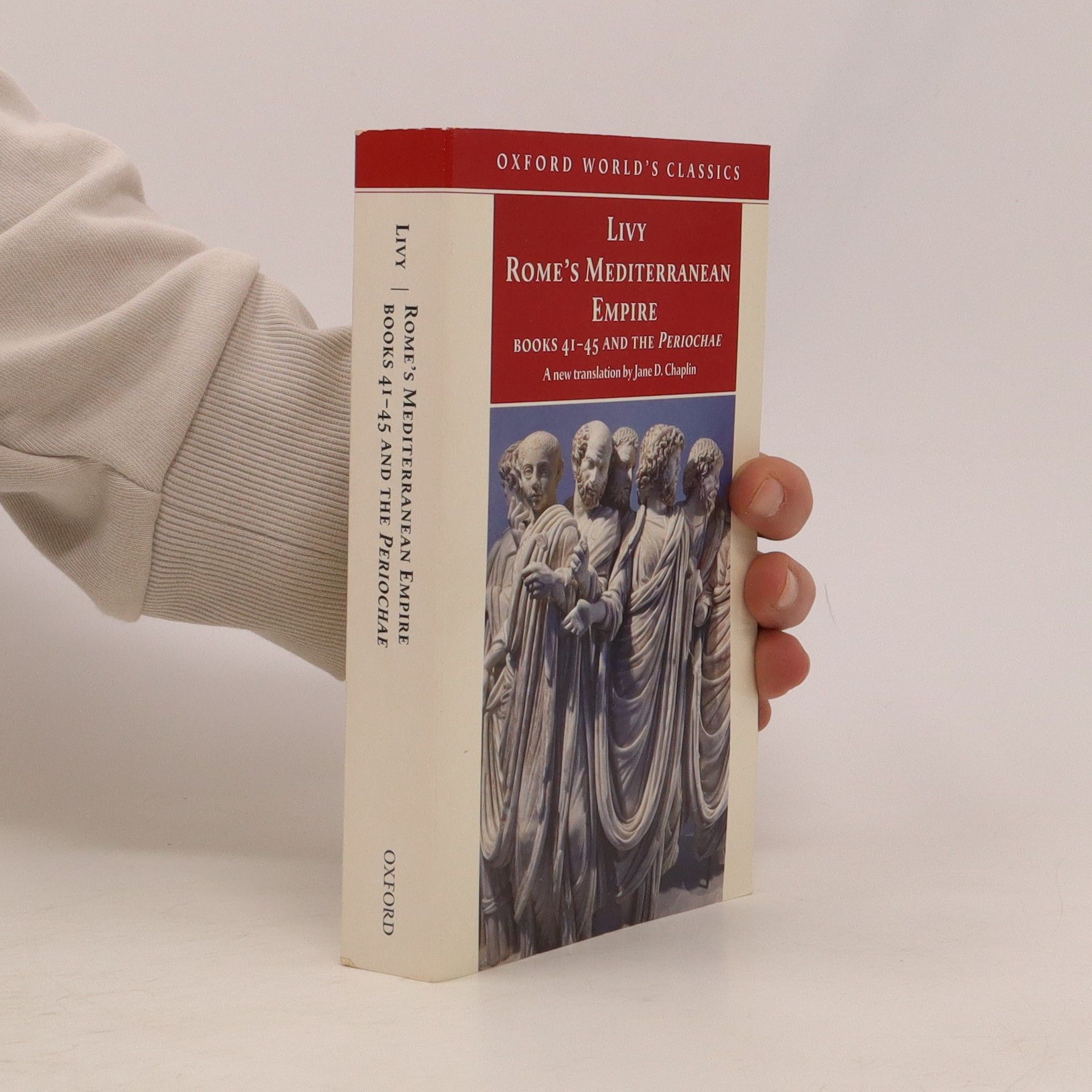Livy's great history of Rome contains, in Books 21 to 30, the definitive ancient account of Hannibal's invasion of Italy in 218 BC, and the war he fought with the Romans over the following sixteen years. This new translation captures the brilliance of Livy's style, and is accompanied by a fascinating introduction and notes.
Titus Livius Libros







Livy (Titus Livius, 64 or 59 BC AD 12 or 17), the great Roman historian, presents a vivid narrative of Rome's rise from the traditional foundation of the city in 753 or 751 BC to 9 BC and illustrates the collective and individual virtues necessary to maintain such greatness. The fourth decad (31 40) focuses on Rome's growing hegemony in the East.
History of Rome, Volume X
- 490 páginas
- 18 horas de lectura
Livy (Titus Livius, 64 or 59 BC AD 12 or 17), the Roman historian, presents a vivid narrative of Rome's rise from the traditional foundation of the city in 753 or 751 BC to 9 BC and illustrates the virtues necessary to achieve such greatness. The books of the fourth decad (31 40) focus on Rome's growing hegemony in the East in the years 200 180.
Rome's Italian Wars
- 416 páginas
- 15 horas de lectura
In Books 6 to 10 of his monumental history of Rome, Livy deals with the period in which Rome recovered from its Gallic disaster to impose mastery over almost the entire Italian peninsula in a series of ever greater wars. Vivid portrayals of personalities, politics, warfare, and religion bring 4th-century Italy vividly alive in this new translation.
The Dawn of the Roman Empire
- 612 páginas
- 22 horas de lectura
Books 31 to 40 of Livy's history chart Rome's emergence as an imperial nation and the Romans tempestuous involvement with Greece, Macedonia and the near East in the opening decades of the second century BC; they are our most important source for Graeco-Roman relations in that century. Livy's dramatic narrative includes the Roman campaigns in Spain and against the Gallic tribes of Northern Italy; the flight of Hannibal from Carthage and his death in the East; the debate on the Oppian law; and the Bacchanalian Episode.
The only extant work by Livy (64 or 59 BCE 12 or 17 CE) is part of his history of Rome from the foundation of the city to 9 BCE. Of its 142 books, 1 10, 21 45 (except parts of 41 and 43 45), fragments, and short summaries remain. Livy s history is a source for the De Prodigiis of Julius Obsequens (fourth century CE).
Livy (c. 59 BC-AD 17) dedicated most of his life to writing some 142 volumes of history, the first five of which comprise The Early History of Rome. With stylistic brilliance, he chronicles nearly 400 years of history, from the founding of Rome (traditionally dated to 757 BC) to the Gallic invasion in 386 BC - an era which witnessed the reign of seven kings, the establishment of the Republic, civil strife and brutal conflict. Bringing compelling characters to life, and re-presenting familiar tales - including the tragedy of Coriolanus and the story of Romulus and Remus - The Early History is a truly epic work, and a passionate warning that Rome should learn from its history.
The Third Macedonian War ended the kingdom created by Philip II and Alexander the Great and was a crucial step in Rome's eventual dominance of the Mediterranean World. For Livy, the story is also a fascinating moral study. He presents the war not so much as a battle against Perseus,Alexander's last and least worthy successor, than as a struggle to shape the Roman national character. Only traditional moral strength, embodied in Lucius Aemilius Paullus, the general who ultimately defeats Perseus, ensures the Roman victory.This is the first complete English translation in fifty years of Brooks 41-45 of Livy's history of Rome. The excellent introduction by Jane D. Chaplin sheds light on the place of Livy's work in ancient historical writing, discusses his sources and the historical background, and highlights thestructure of the five books and their content. The book includes explanatory notes, a glossary of technical terms, a summary of events, an index, and four maps. It is the only paperback edition to include the Periochae , the summaries of Livy's entire 142 books, previously available in English onlyin Loeb's hardcover series.
Romulus and Remus, the rape of Lucretia, Horatius at the bridge, the saga of Coriolanus, Cincinnatus called from his farm to save the state - these and many more are stories which, immortalised by Livy in his history of early Rome, have become part of our cultural heritage. The historian's huge work, written between 20 BC and AD 17, ran to 12 books, beginning with Rome's founding in 753 BC and coming down to Livy's own lifetime (9 BC). Books 1-5 cover the period from Rome's beginnings to her first great foreign conquest, the capture of the Etruscan city of Veii and,a few years later, to her first major defeat, the sack of the city by the Gauls in 390 BC
Hannibal
- 64 páginas
- 3 horas de lectura
'We have nothing left in the world but what we can win with our swords.' The remarkable account of Hannibal crossing the Alps with his elephants and winning the Battle of the Trebbia. One of 46 new books in the bestselling Little Black Classics series, to celebrate the first ever Penguin Classic in 1946. Each book gives readers a taste of the Classics' huge range and diversity, with works from around the world and across the centuries - including fables, decadence, heartbreak, tall tales, satire, ghosts, battles and elephants.


